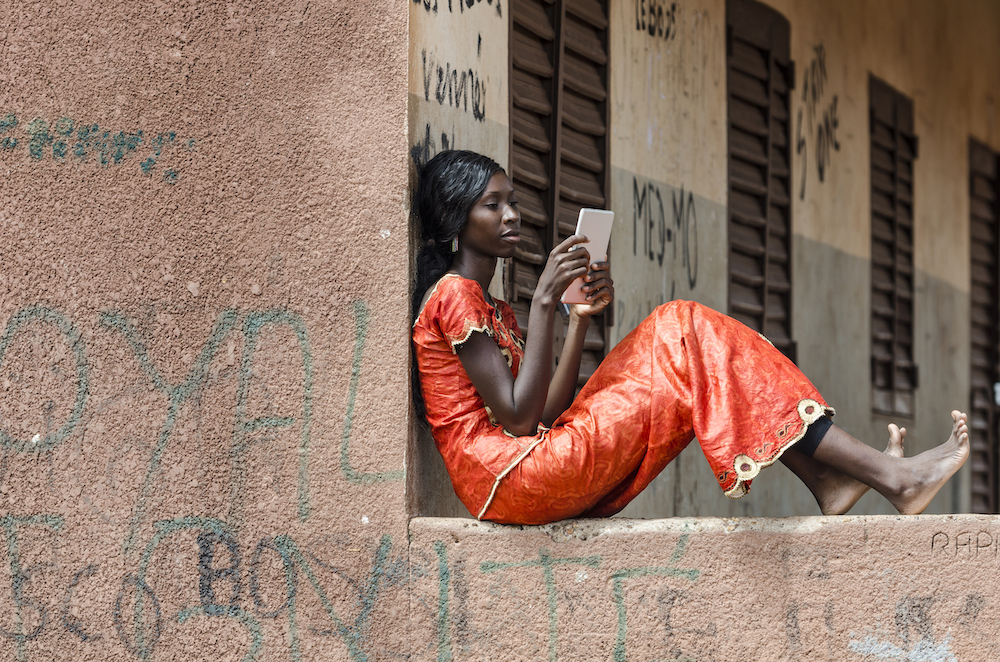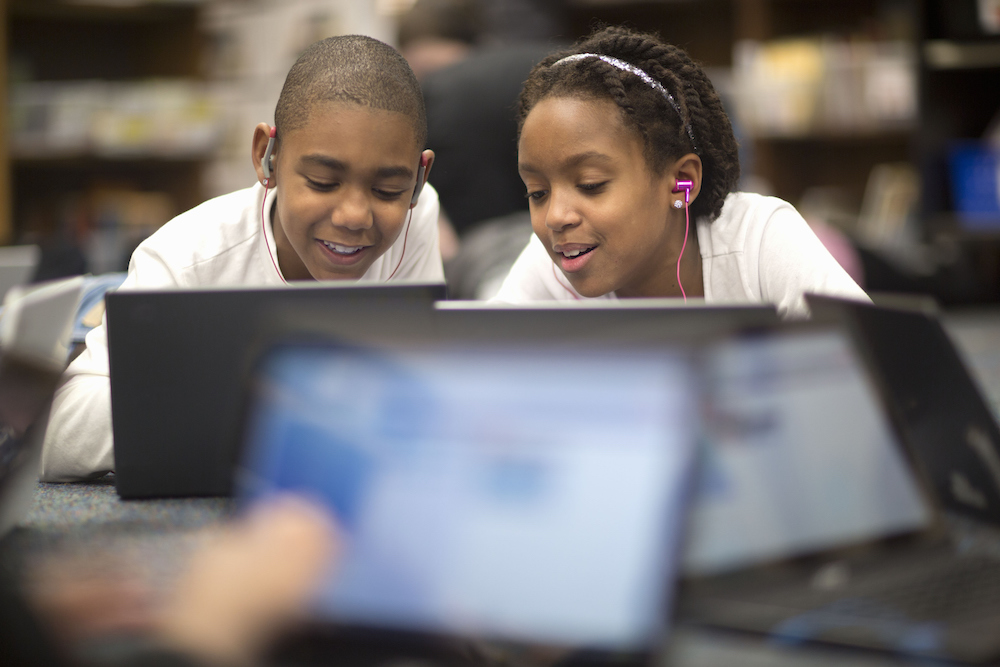Lesson 5: Versions of Media Texts
Before you start the lesson, make sure to read through the lesson overview and the lesson preparation. The Facilitator Guide can also help you prepare.
Lesson Overview
Students will be able to define what a scrape (a copy from an original) is and explain why the proliferation of this type of media text can make the verification process more difficult during breaking news events. They will create and share their own scrapes online as they reflect upon when it is important to identify a scrape’s source or a news event’s original context.
Lesson Preparation
ESTIMATED TIME
ESSENTIAL QUESTIONS
- Why and how can it be helpful to identify an original image online and copies of it made afterwards?
- Looking at the original image and the copies that followed, what potential story might this tell?
MATERIALS
- Internet Access
- Additional Teacher Resources Listed
PREPARATION
- Students will need internet access for this lesson.
- There are opportunities to localize content to your students’ experience and local context. These opportunities are flagged as a “Teacher’s Note.” We suggest you read through the lesson ahead of time and prepare the examples before the lesson begins.
OPTIONAL: ISTE DIGCITCOMMIT COMPETENCY
- INFORMED: I evaluate the accuracy, perspective, and validity of digital media and social posts.
Verifying Images or Videos
TELL YOUR STUDENTS
You previously learned about the five-step verification checklist professional journalists use when they want to verify an image or video. (Quickly recap with students the five items on the Verification checklist.)
- Origin: Are you looking at the original piece of content?
- Source: Who created the piece of content?
- Date: When was the piece of content captured?
- Location: Where was the piece of content captured?
- Motivation: Why was the piece of content captured?
Today, we will talk about the first two items on the checklist: origin and source. In the current media landscape, people are constantly creating, sharing, and adapting media content, especially on social media platforms. Journalists and news consumers can use a variety of tools to verify an image or video and determine whether it has been used in the correct context. That is why we consider verification to be a process — because verifying content involves multiple steps and it can sometimes take a long time to complete. One challenge people face when it comes to verifying content is that photos and videos circulate from platform to platform and can easily be modified, copied, and taken out of context.
ASK YOUR STUDENTS
- Have you ever copied an image or video from one platform and shared it on another one?
- Have you ever posted something a friend shared with you on a different platform?
- Have you ever deleted something and then reposted it at a later time?
TELL YOUR STUDENTS
Scrapes are pieces of content that are copied from an original and sometimes move from one platform to another. The term comes from the verb “to scrape,” and it refers to a piece of content that is copied by a user to create a new version of the content.
(Scrapes are also called copies or versions of media texts. If you/your students want to find more resources about scrapes online, you can also use these other terms. Elsewhere in this learning experience, we have decided to refer to scrapes as “scrapes (versions)” to reflect this multiplicity of terms.)
Imagine you are sharing a photo you captured on a closed messaging platform, like Snapchat or WhatsApp, and then one of your friends takes a screenshot of it and posts it onto a more “public” platform like Twitter. Let’s say a journalist found your friend’s screenshot and wanted to find out who took the photo.
Optional: Ask students to turn to the person sitting next to them to discuss these questions in pairs.
ASK YOUR STUDENTS
- How could the journalist find out that you are the original creator?
- What if your friend’s post became popular and 50 other people shared it? How could the journalist find out who the original creator is? (The journalist could contact your friend and ask if he/she took the photo. If the journalist has found multiple scrapes (versions) of the image, he/she may look at the date each scrape was posted and try to contact the person who made the earliest post.)
TELL YOUR STUDENTS
Scrapes (versions) can become a problem during breaking news events because information can spread very quickly and it can be difficult to figure out who originally created the content and when it was created. On websites like YouTube, some people will download an original video of a news event and quickly re-upload it using a different username, in hopes of making money (First Draft). “You can sometimes see hundreds of (versions) of the same video in the hours after a breaking news event” (First Draft).
When you first come across a piece of content, you cannot assume that you are looking at the original. Look for clues such as the following that can tell you whether the image or video is the original version:
- Scrapes (versions) generally have a lower image or video quality compared to the original version. They can also have smaller file sizes or nonstandard dimensions (which indicates that the content may have been manipulated or changed from the original).
- Look at the account of the person who is sharing the image or video. Do they share other scrapes (versions) of breaking news events? That probably means that they are not the original creators of the content.
- Does the image or video come from an organizational website? Organizations “can sometimes reshare content from an individual eyewitness” (First Draft).
- Finally, check your gut. Is it likely that this person was at the event and is sharing the original video?
Assignment
TELL YOUR STUDENTS
Go online and find an image from a recent news event that interests you. Identify the source of the image. Make a scrape of the image and share it on one of your social media accounts. When posting the image, you can choose to adapt the image in any way (e.g., edit, crop, add text) before you share it. When posting the image, be sure to identify its original source.
Then write a short paragraph answering the following questions:
- What image did you decide to share and why?
- Where and with whom did you share the image?
- Did you choose to alter (e.g., edit, crop, add text) the image in any way before sharing it? What was your objective behind adapting/not adapting the image?
- Do you think your post would have different reactions if you did not identify the original source? Why or why not?
Turn to the person next to you. Share the image you posted and briefly explain why you chose this particular image.
ASK YOUR STUDENTS
- What are some of the reasons people might choose to reshare content online?
- Think of other famous scrapes (versions) you have seen people share online. Are there instances when identifying a source is more/less important than others? Talk through some examples as a class and discuss whether they are harmful or not.
Discussion
VIDEO CLASS INTERACTION
In today’s news climate, any image or video can be captured, altered, or shared by anyone with access to the internet and a computer or mobile device. In some cases, the content in question can be seen by countless people and altered again and again in such a way that the original image is almost unrecognizable. One particular instance of this phenomenon can be seen when scrapes (versions) become popular memes.
CLASS INTERACTION
Consider the image of the kayaker and shark at the link below:
https://www.nationalgeographic.com/animals/article/great-white-shark-meme-news-photography-animals-peschak
TELL YOUR STUDENTS
Images of the kayaker and shark went viral after it was first published in South African newspapers. Replicas of the image have been reshared rapidly online, sometimes without identifying the original source.
Some of these scrapes (versions) have been turned into popular memes that have been featured in major publications. However, these memes often require some knowledge of the original context. As a result, people who see the kayaker and shark memes in isolation may not fully understand it if they do not know the context behind the original photo.
Teacher's Note
This example is intended to help students understand how to verify image scrapes by following the verification steps. While the South African shark story is a great example of scrapes, we encourage you to choose an image or video that will resonate with your students. If there is a local example that your students will connect with more, we recommend using that example instead.
ASK YOUR STUDENTS
- Think of some famous scrapes (versions) that have become memes. Do you have any favorites?
- Are you familiar with the original source of this meme? What about the original context?
TELL YOUR STUDENTS
Visual information, even more so than text, is designed to grab people’s attention on social media. As a responsible news consumer, you can decide how best you want to engage with, share or adapt content that you see your friends, family, and other people are posting online.
ASK YOUR STUDENTS
- Based on what you have learned about scrapes (versions) today, how will you respond to scrapes and memes you see in the future?
Resources
Congrats!
You've finished the lesson
Source:
This content is hosted by Meta and currently includes learning resources drawn from Youth and Media at the Berkman Klein Center for Internet & Society at Harvard University under a Creative Commons Attribution-ShareAlike 4.0 International license. You can make use of them, including copying and preparing derivative works, whether commercial or non-commercial, so long as you attribute Youth and Media as the original source and follow the other terms of the license, sharing any further works under the same terms.



 Previous Lesson
Previous Lesson 




